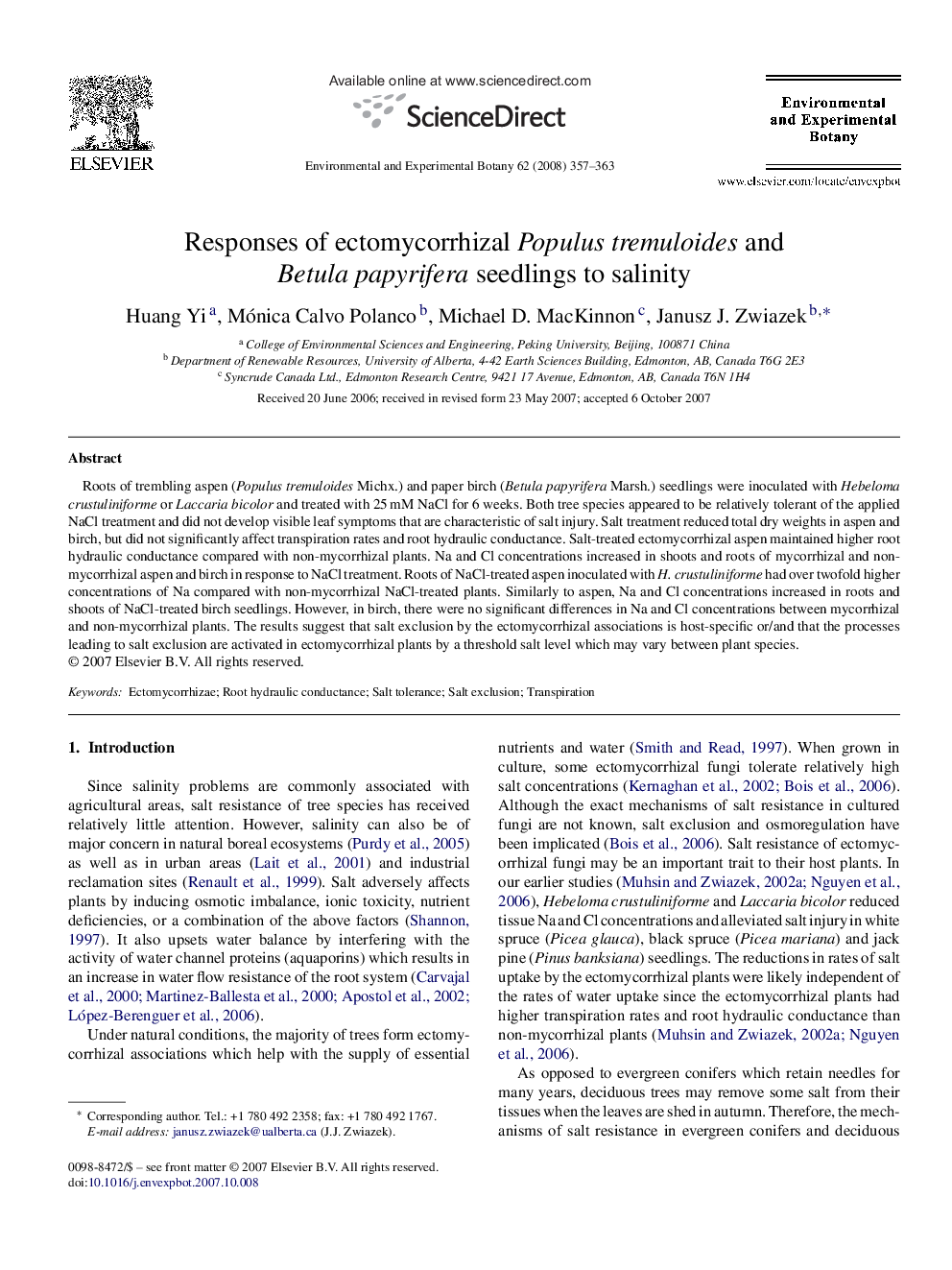| Article ID | Journal | Published Year | Pages | File Type |
|---|---|---|---|---|
| 4555447 | Environmental and Experimental Botany | 2008 | 7 Pages |
Roots of trembling aspen (Populus tremuloides Michx.) and paper birch (Betula papyrifera Marsh.) seedlings were inoculated with Hebeloma crustuliniforme or Laccaria bicolor and treated with 25 mM NaCl for 6 weeks. Both tree species appeared to be relatively tolerant of the applied NaCl treatment and did not develop visible leaf symptoms that are characteristic of salt injury. Salt treatment reduced total dry weights in aspen and birch, but did not significantly affect transpiration rates and root hydraulic conductance. Salt-treated ectomycorrhizal aspen maintained higher root hydraulic conductance compared with non-mycorrhizal plants. Na and Cl concentrations increased in shoots and roots of mycorrhizal and non-mycorrhizal aspen and birch in response to NaCl treatment. Roots of NaCl-treated aspen inoculated with H. crustuliniforme had over twofold higher concentrations of Na compared with non-mycorrhizal NaCl-treated plants. Similarly to aspen, Na and Cl concentrations increased in roots and shoots of NaCl-treated birch seedlings. However, in birch, there were no significant differences in Na and Cl concentrations between mycorrhizal and non-mycorrhizal plants. The results suggest that salt exclusion by the ectomycorrhizal associations is host-specific or/and that the processes leading to salt exclusion are activated in ectomycorrhizal plants by a threshold salt level which may vary between plant species.
